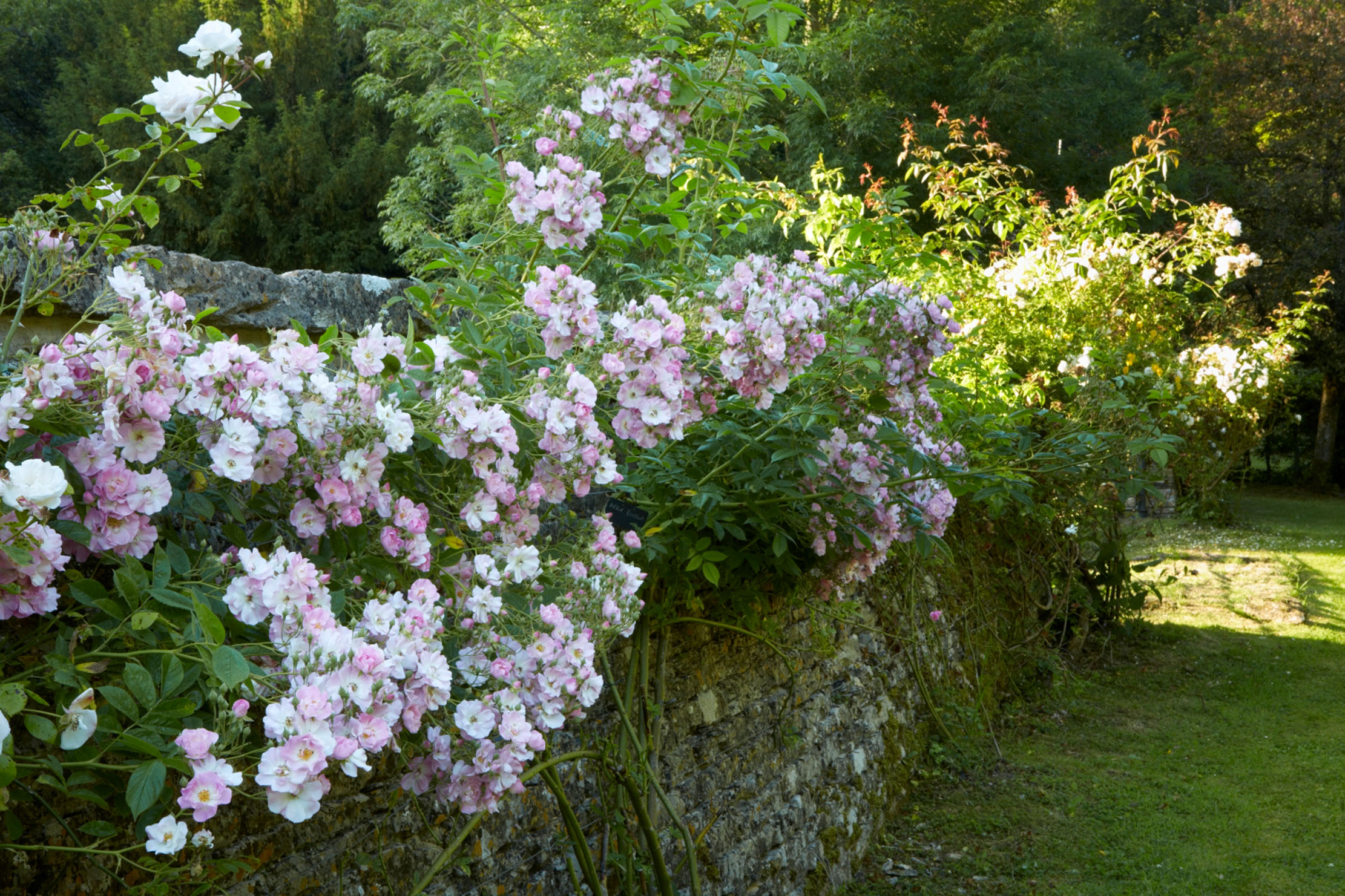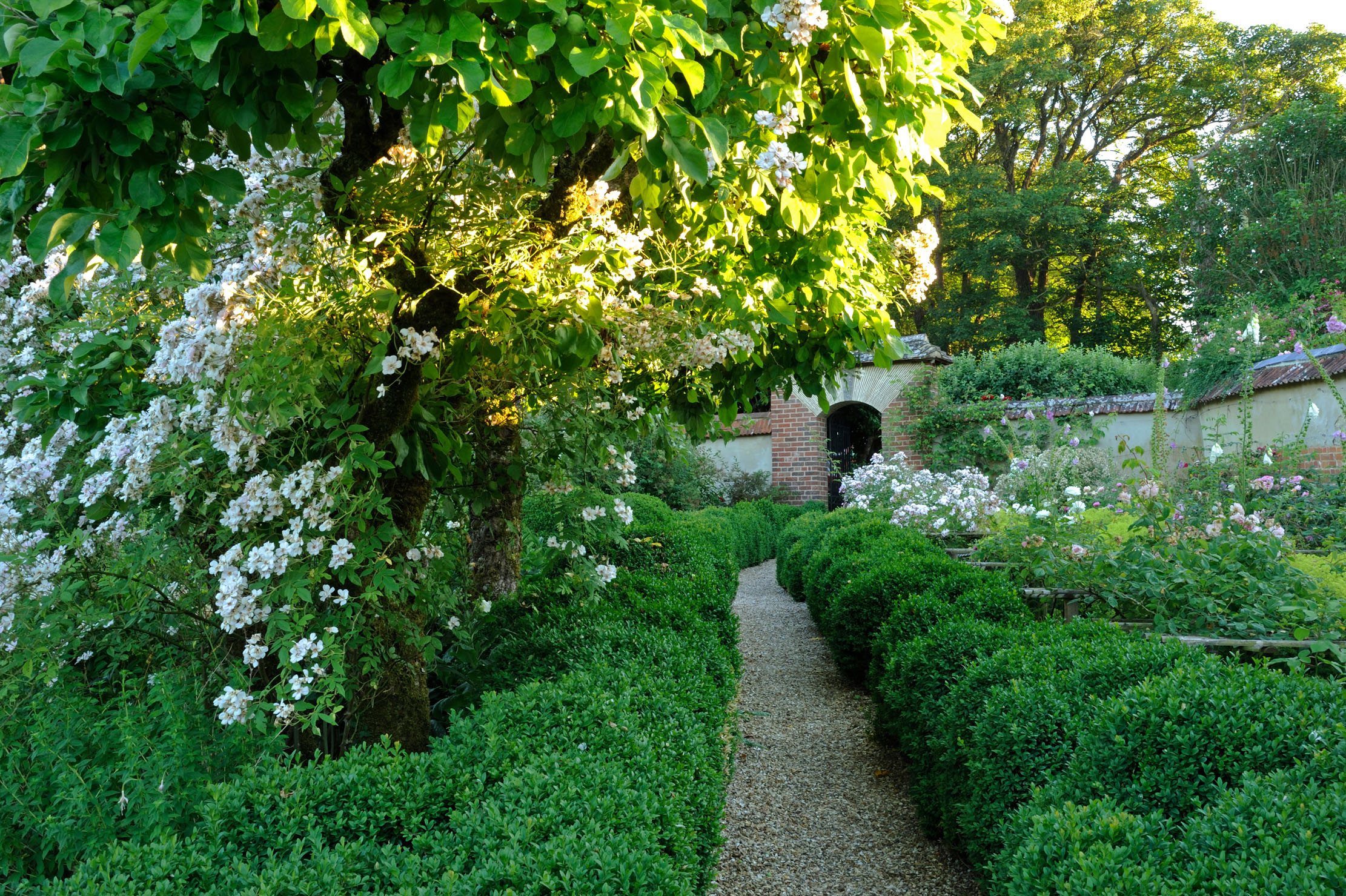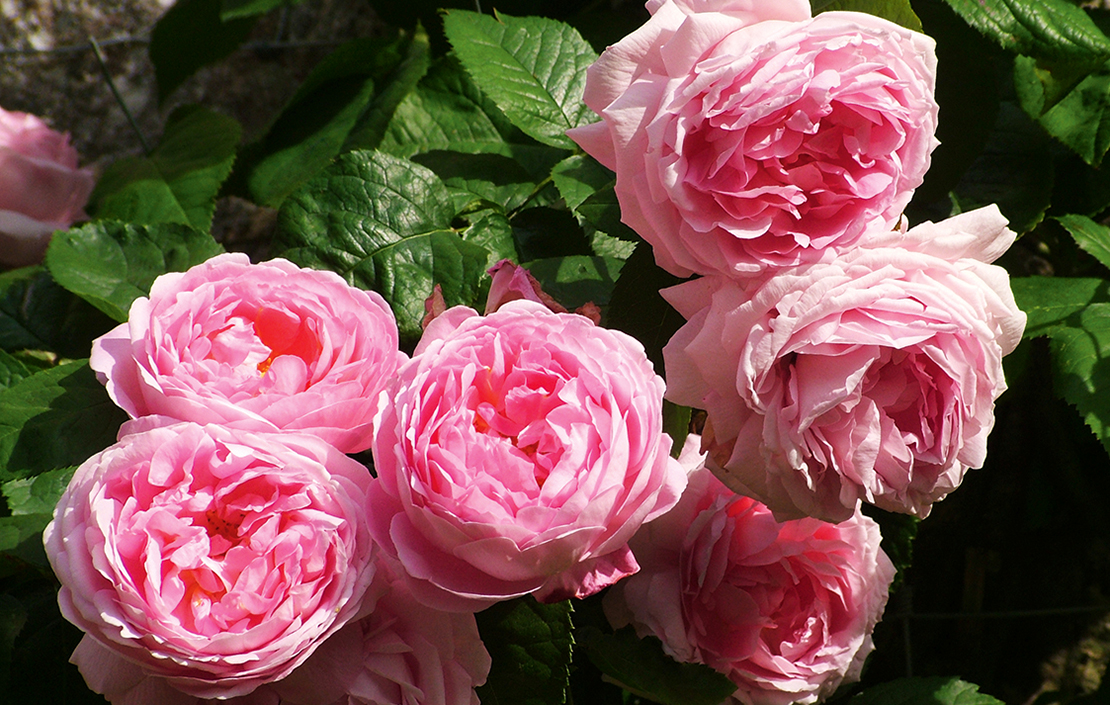How the 'greatest gardener ever' helped make British roses as we know them today
Charles Quest-Ritson, author of The RHS Encyclopedia of Roses, on Graham Stuart Thomas, how he nurtured British roses, and why now is the time for a proper national collection.


Graham Stuart Thomas was once called ‘the greatest gardener ever’. That may be debatable (nominations, please), but no one doubts his enormous influence on how we garden today. During his years as gardens adviser to the National Trust, Thomas made attractive, but cheap-to-maintain gardens for more than 100 newly acquired and run-down properties. After he retired (he was still bright and active in his nineties), he wrote a series of books about perennials, alpines, bamboos, trees and climbers. They taught us how to use plants to make our gardens beautiful.
Thomas’s most influential publication, however, came out long before he started writing books. It was the catalogue of old roses he produced after the end of the Second World War, when he was working as managing director of a wholesale nursery near Woking in Surrey called Hilling. Thomas had been collecting roses for some years and, when a specialist nursery such as Bunyard’s or Beckwith’s ceased trading, Hilling would buy their stock at the liquidator’s auction. During the war, Hilling grew potatoes to feed the nation; in 1945, it turned again to ornamental plants.

Thomas had acquired and trialled some 1,500 different roses, but he was not, at that time, a conservationist. He decided that only about 250 were worth saving; many of the rest are now extinct. Thomas launched his chosen Old Garden Roses — including Gallicas, Damask and Moss roses — as an upmarket line for which buyers would have to pay a premium. The latest Hybrid Teas cost 12 shillings and sixpence each, so he charged 15 shillings for his old roses.
Their names were romantic and evocative, commemorating aristocratic ladies such as the ‘Duchesse de Montebello’ and the ‘Empress Josephine’ herself. The chattering classes were hooked and, within a few years, garden owners such as Constance Spry and Vita Sackville-West were proudly displaying and writing about Thomas’s old-fashioned beauties. Such was their success that Thomas wrote a book about them and The Old Shrub Roses was published in 1955.
"The only solution is a National Rose Garden, bringing together all the surviving varieties ever introduced by British breeders or once widely planted in our gardens"
Fashion is fickle. Soon, the criticism was made that most of the old roses flowered only once. Thomas responded with a book about modern roses that didn’t look like Hybrid Teas — perish the thought — but flowered repeatedly. Shrub Roses of Today [1962] extolled the charms of the Revd Pemberton’s Hybrid Musks, the hybrids of R. rugosa and modern descendants of the Scots roses, such as ‘Nevada’ and ‘Frühlingsgold’. Every dedicated follower of horticultural fashion promptly bought them.
Ten years later, Thomas gave away his collection of old roses. A complete set went to the gardens of the Royal National Rose Society (now shamefully defunct) and another to the National Trust at Mottisfont Abbey in Hampshire. That was 50 years ago and, by and large, the roses have survived and continue to beguile visitors. Some, however, are no longer available from English nurseries — even Peter Beales Roses, which owed its success to selling old roses, has cut back its stock list.
Thomas’s modern roses are now subject to exactly the same changes of fashion that nearly condemned the Old Shrub Roses to oblivion. Does it matter? Yes, it does. Too much of our garden history — our cultural history — is bound up with the plant varieties that our forebears grew. All have been overtaken by David Austin’s roses, which seek to combine the charm of the old with the repeat-flowering and greater colour-range of the new.
Exquisite houses, the beauty of Nature, and how to get the most from your life, straight to your inbox.

And lovely they are, too. I am not the only old-rose lover who grows more and more of Austin’s ‘English’ roses every year. But that company, as do all rose-breeders for the past 200 years, makes its money out of novelty, bringing out new and improved roses every year, so that varieties launched 20 years ago as the best thing since sliced bread are no longer offered for sale.
The old roses have not lost their charm. They attract new admirers and keep much of their market share. But the modern shrub roses that Thomas extolled in 1962 are rare, endangered or extinct — although, no doubt, some remain in old gardens, unnamed and unrecognised. If anyone really wants a particular cultivar, such as ‘Oratam’ or ‘Mechtilde von Neuerburg’, it is usually possible to get budwood from one of the great rose collections in Germany, Italy or France, but that’s a faff and the phytosanitary regulations that have followed on from Brexit haven’t helped.
The only solution, I believe, is to create what the Royal National Rose Society failed to accomplish — a truly National Rose Garden, bringing together all the surviving varieties ever introduced by British breeders or once widely planted in our gardens. It will need money and commitment: who will help me to achieve this monument to the British love of roses over the centuries?
Charles Quest-Ritson is a historian and writer about plants and gardens. His books include The English Garden: A Social History; Gardens of Europe; and Ninfa: The Most Romantic Garden in the World. He is a great enthusiast for roses — he wrote the RHS Encyclopedia of Roses jointly with his wife Brigid and spent five years writing his definitive Climbing Roses of the World (descriptions of 1,6oo varieties!). Food is another passion: he was the first Englishman to qualify as an olive oil taster in accordance with EU norms. He has lectured in five languages and in all six continents except Antarctica, where he missed his chance when his son-in-law was Governor of the Falkland Islands.
